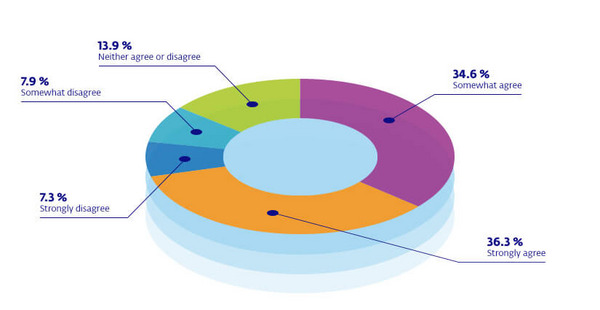Managing the security of a remote workforce does not need to be a burdensome task when the cloud is there to make remote management fast and easy.
Along with social and economic changes come new pressures and new opportunities for businesses. Matters are no different as we witness the current global shift toward working from home. For small and medium-sized businesses (SMBs), many of which plan on long-term use of hardware and other on-premise IT assets, that now puts extra pressure on budgets to provision new IT infrastructure for remote setup and management of employee devices.
The question that businesses have to ask themselves is, “How can we extend or scale up our IT infrastructure to support a new group of remote employees?” In some cases, there will be the option to scale up in the cloud, which has advantages over on-premise infrastructure in at least the following two ways:
First, purchasing and setting up new hardware and software can come with a hefty initial cost.
Second, you may not need all the new hardware once your workforce returns to the office.
In other words, the question that businesses were first asking themselves would now go the other way around: “How do we scale down our (existing) IT infrastructure, when the business revenue does not support, or no longer supports, remote employees?” But perhaps, this was already the first question!
So, scaling up and down, almost on demand, immediately evokes thoughts about the cloud as a tantalizing prospect.
Cloud-based remote management: Becoming flexible for changing times
Some businesses may already be familiar with both the benefits and concerns of moving to the cloud. Indeed, some businesses try to get the best of both on-premise and cloud environments by straddling the two worlds in hybrid setups. Regardless of your current setup, there are at least three use cases to consider, in which moving to the cloud will solve the remote workforce pain point for both your dollars and your time:
Use Case 1: SMBs looking to build a secure, managed network of remote workers for the first time.
Explanation: Businesses need to secure employees’ computers, make sure software is updated, deploy and configure security products, etc. But when employees are working from home, IT administrators don’t have easy access to corporate machines.
Leveraging a cloud-based management dashboard, admins can send download links that merely require one click from employees to begin security product installation, followed by seamless reporting of devices to your dashboard.
Wherever staff might be, the admin gains control over the company’s entire remote workforce, and secures each device with an advanced endpoint security solution.
In addition, the admin starts saving time. Instead of performing the same operation repeatedly for every device, the admin only needs to run a task once for the entire company.
Use Case 2: SMBs needing a flexible IT infrastructure that can support workplace transformation plans
Explanation: In an almost prophetic intuition of future events, a survey by IDC in November 2019 revealed that nearly 71% of business decision-makers agreed that “adopting a future workspace model that includes a flexible, intelligent, collaborative virtual/physical work environment will be important to improving employee productivity and driving business value in the future.”* (Italics were added; results are illustrated below.)

In concrete terms, transforming the workspace would include such initiatives as increased access to business platforms and data via mobiles, online collaboration tools and remote work.
71.4% of survey respondents had already allocated budget to drive forward such initiatives. In terms of IT infrastructure, here, the cloud can greatly help small and medium-sized businesses to transform quickly and maintain flexibility – all with less budget impact.
Use Case 3: SMBs searching for a dynamic solution that can handle rapid business changes brought on by government regulations related to COVID-19. (Additional flexibility offered by applying use cases 1 and 2 to use case 3.)
To address these types of use cases and business needs, ESET developed ESET Cloud Administrator (ECA), a cloud-based remote management solution for SMBs. ECA takes away the hassle of buying, installing and configuring any hardware on-premises. All of that work is handled by ESET in the cloud instead. Normal maintenance gets taken care of, too, whether that involves server cleanups, certificate management, or automatic upgrades to the latest version of ECA.
Vladimír Maťovčík, senior product manager at ESET, explains: “Accessing files and services from wherever you are via the cloud is a powerful capability. Businesses use the cloud because it is an opportunity to improve overall productivity. By enlisting the services of a trusted and cybersecure partner like ESET, the cloud can actually free you up from certain constraints and breathe fresh air into your business.”
*Source: IDC, Work in the COVID-19 Era: Accelerating Work Transformation, Doc # US45398319, March 2020. Holly Muscolino, Amy Loomis
